We have done quite a lot of road-tripping in a number of countries, but Australia is our home turf and there is a lot of ground to cover here. As a result, we have done a lot of road-tripping in Australia (like our road trip between Darwin and Perth and Sydney to Uluru return) and that experience has taught us a few things that add up to make a big difference in the cost of a road trip. It doesn’t matter whether you are driving a car and staying at motels/hotels/cabins/etc, towing a caravan or cruising in a camper van, these things will help save you money.
You might also like:
- 11-day Sydney to Uluru Road Trip Itinerary
- Do I need a 4WD to do a Darwin to Perth road trip?
- Darwin to Perth 14-day Road Trip Itinerary
Drive a diesel
This one isn’t going to be practical for everyone, but if you can do your road trip in a diesel vehicle you will typically come out a winner on two fronts. The first being that diesel cars are typically more fuel-efficient and can do more kilometres per tank than their petrol counterparts, especially if you are towing something. We can do 1000+ km’s on a tank of diesel in our car for example which at an average priced service station costs about $85. To top that off it likes more weight and actually performs even better if it is loaded up or is towing something that doesn’t add a substantial amount of wind resistance. Petrol cars are getting more efficient, but that still brings me to the second reason driving a diesel is beneficial.
Diesel is almost always cheaper than petrol and fluctuates less between destinations. So most importantly, once you hit areas where fuel prices are climbing, diesel typically remains cheaper. Even taking into account fluctuations that are presently bringing petrol cheaper than diesel in some built-up areas at the moment, the price difference between them in regional and remote areas can easily outweigh those petrol fluctuations. As an example, when we were at Uluru, diesel was $1.739/L. Petrol started at $1.869 for regular unleaded and went up for higher octane variants. This is the most expensive fuel I’ve encountered, but everywhere I go in rural and remote parts of Australia, diesel is pretty consistently cheaper. So when you do a lot of km’s, that really adds up.
Another advantage of diesel is that as you get to areas that are less tourist-oriented, every service station has diesel fuel and lots of it but not all have petrol, or may only have small quantities of it. Electric and hybrid cars are other options but plugin points can be hard to find for electric cars in remote areas. Hybrids can perform well but you are much more limited in their towing capacity so depending on how you are travelling may not be practical.
Get a fuel card
Not all fuel cards are created equal, and you aren’t always going to be able to refuel at the service station that your fuel card is valid for, but when you can, it will save you money. Some novated leases include a fuel card with your car, but there are other options.
For us, we found the Caltex StarCard Debit worked out to be the best value. There are no fee’s on it unless you top up using a credit card. If you top up via direct debit, though, it just debits $100 from your bank account every time your balance dips below $50. In return for providing this pre-payment, you get 2c/L off regular fuels (petrol/diesel), 4c/L off premium fuels (Vortex Petrol/Vortex Diesel) and a 5% discount on in-store purchases.
It doesn’t matter if you haven’t been shopping somewhere to get a discount voucher, or if you aren’t at a service station that doesn’t accept shopping vouchers. As long as it is a Caltex service station the discount applies, and yes, that does also include Woolworths Caltex stores. Again, it’s not a huge discount but every dollar you save adds up when you are covering a lot of kilometres.
Note on the Caltex StarCard in 2021: Caltex is rebranding to Ampol and the Caltex StarCard has been discontinued, replaced by an Ampol branded one. Right now, I haven’t been thrilled with the new Ampol one and am still exploring what is now the best option.
Get a cashback credit/debit card or use a point-earning card
This builds on the fuel card concept. We used to have an ING Direct Visa debit card that gave us 2% cashback on Paywave purchases of $100 or less. That basically means we save 2% on any purchases we make on the card. This particular offer ended on September 30, 2016, but there are other options around. We now use a BankWest Qantas debit card for low-value purchases and a Qantas credit card, both to earn Qantas Points on our expenditure.
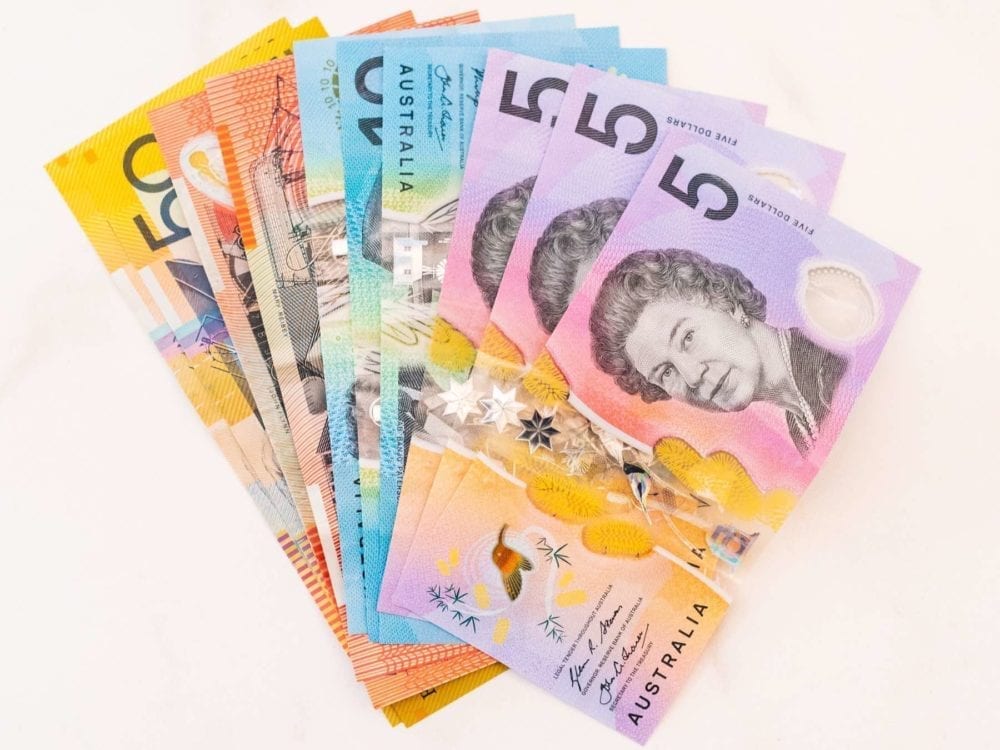
A cashback or point-earning card also helps you save some dosh at other service stations, but it does mean you have to be conscious of what deal will work out best. For example, if you are getting regular fuel at a Caltex where you will only get 2c/L off the fuel with the fuel card, then a 2% cashback card will save you more money if the fuel costs more than $1.00/L. However, if you are getting premium fuel such as Vortex Diesel, then 4c/L off with the fuel card will save you more on fuel than the 2% cashback card would.
Shop at Coles or Woolworths for bigger purchases
Australia’s two largest supermarket chains, Coles and Woolworths, both operated fuel discount programs at participating service stations. With the exception of special promotional offers, the typical deal at both supermarkets is this: Spend $30 or more in a single shop and you will get a voucher for 4c/L off of fuel.
You don’t need to be a member of their respective loyalty programs to get the discount voucher, it will be printed at the end of your receipt. So make sure you get your receipt and keep the voucher section safe until you need to use it.
Fuel vouchers usually expire in 28 days from the date of your grocery purchase, more than enough time to use them, but be aware that participating service stations do become more limited in remote areas.
Coles partners with participating Shell service stations to offer the fuel discount. Some service stations will be co-branded as “Coles Express”. These service stations have a range of Coles grocery essentials and all accept the fuel vouchers. Others are Shell service stations that participate in the discount program. Not all Shell service stations do though, so make sure to look for Fly Buys, Coles, and 4c/L discount signs before you fill up to ensure your discount voucher will be accepted. Coles has a list of Coles Express service station locations here.
Woolworths partners with participating Caltex service stations. Some service stations are branded as Woolworths Petrol, others are co-branded as Caltex Woolworths, and some are just branded as Caltex. Participating Caltex locations have grown, but like Shell, not all Caltex servos participate in the fuel discounts so look for Woolworths, Woolworths Rewards and 4c/L discount signs before you fill-up to make sure you don’t get caught out. Caltex has a handy list of participating service stations here.
If you are doing a road trip between Darwin and Perth, for example, Coles Express branded Shell service stations are much more common than Woolworths Caltex ones as Coles Express also serves as the local supermarket for many remote townships.
Do be aware as well that if you are in an area that has Coles Express or Woolworths co-branded service stations and you have a 4c/L fuel voucher you can actually double up on your discounts. For example, you can use the 4c/L voucher and then pay with your cashback or point-earning debit or credit card so you will get 4c/L off and then a further 2% cash back or points. Nice.
If you don’t have access to a cashback card, I’d recommend using a point-earning credit or debit card instead. The points may not add up rapidly but they do add up and will save you some money in the long run. You could use a QANTAS Cash debit card or Virgin Velocity point earning credit card as two examples that will feed into points for flights with either of those airlines. The Bankwest Qantas debit card we use works out great for low-value purchases. If you use a QANTAS point earning card it can also feed into discounts at Woolworths service stations and supermarkets.
You could also go for a FlyBuys earning card from Coles that will earn you money off your fuel and groceries at Coles branded service stations and supermarkets. Just little things, but they all add up to saving money.
Join Fly Buys and Woolworths Rewards
Fly Buys is the loyalty program offered by Coles, allowing you to earn Fly Buys points on your grocery shop as well as at other participating retailers like Kmart, Target, and many liquor stores. You have to earn 2000 points before you can convert it to a $10 discount on your shopping, so it isn’t much use for shorter trips in that respect. However, Fly Buys often runs promotions for extra discounts on your fuel, allowing you to get bigger fuel discounts.
Woolworths Rewards, as the name suggests, is the Woolworths loyalty program. You earn points on every grocery shop at Woolworths as well as participating retailers including Big W, BWS and Caltex Woolworths. Like Fly Buys, you have to earn 2000 points before you can redeem them for $10 off your groceries. Also like Fly Buys, Woolworths Rewards often runs promotions to give you additional discounts on fuel. Woolworths Rewards does also offer the advantage of saving your regular fuel discount vouchers to your rewards card or app so you don’t have to keep the printed vouchers safe. Yay!
For short trips, these rewards programs probably aren’t worthwhile, but if you are going to be on the road for longer, they are worth considering.
Stick to the speed limit
Seems like common sense but there are a couple of reasons for this. The first one is if you get a speeding fine that automatically adds a few hundred dollars to the cost of your trip which could cost you the equivalent of 4 or 5 tanks of fuel and perhaps a few thousand kilometres.
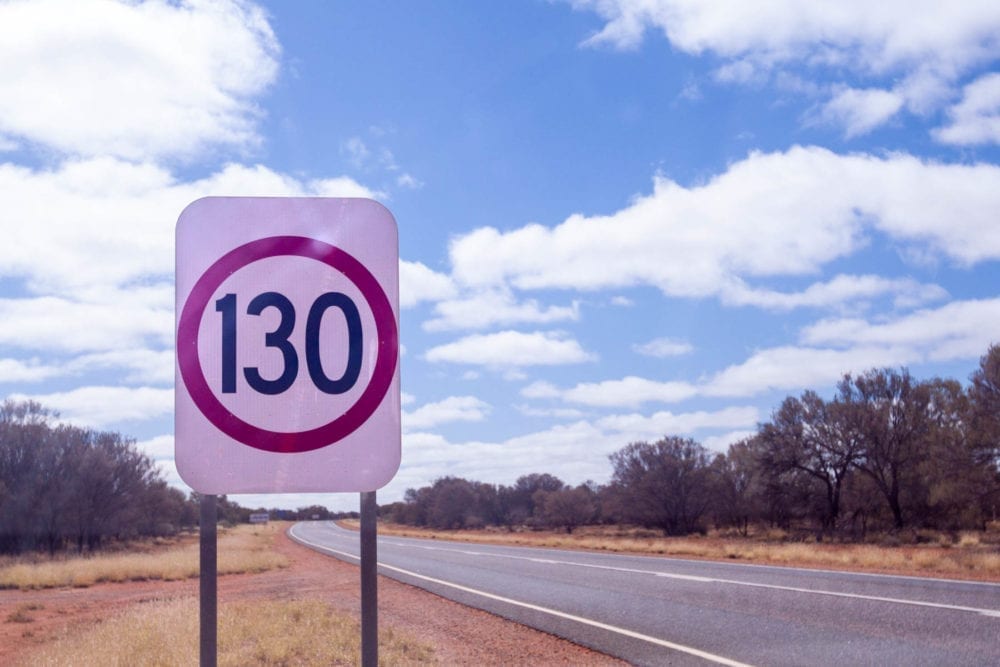
The second reason though is that while the speed limit is typically chosen as the safest speed for a road, it is also typically the most efficient speed to be doing on a road (not always true but most of the time it is). As an example, you could hypothetically be on a straight flat road between Port Augusta and Coober Pedy where the speed limit is 110km/h but the road is just so straight and smooth you could easily do 120km/h or even 130km/h. Say you hypothetically tried that out. You will probably observe a change in the fuel economy of your car. Mine for example, hypothetically, climbs from between 4.5L/100km and 5.9L/100km up to between 7 and 8L/100km. That cuts your range almost in half just to go that little bit quicker, meaning it also costs you more to drive the same distance.
The most fuel-efficient speed, I believe, is about 112km/h in ideal conditions. We never have ideal conditions, though, so stick to the speed limit and over a lot of km’s you will save yourself some cash. Even on roads in the Northern Territory where there are 130km/h speed limits and even a no limit road you still need to look at how fuel-efficient your speed is and drive for optimum efficiency (and safety).
For me, yes, I had to drive 130km/h in the Northern Territory for a little while because it’s the only place in Australia where it is legal to do so. However, the decline in fuel efficiency is so significant that it just isn’t worth doing so for extended periods of time.
Plan your fuel stops
There is generally no need to carry jerry cans full of fuel if you are sticking to the major sealed roads around Australia (if you are going off the major roads or on dirt tracks then it’s a different story) as there are plenty of roadhouses and service stations around. That said if you plan out your stops you can save some cash. For example, fuel is cheaper at the last roadhouse on the Stuart Highway in South Australia heading North than it is across the border in the Northern Territory.
So if you can go the distance from Marla in South Australia up to Uluru and back on one tank (around 1050 kilometres), then you will save yourself money. If you can’t, you could fill up at Erldunda Roadhouse at the turn off to Uluru. While pricey, it’s still cheaper than fuel at the Uluru township of Yulara.
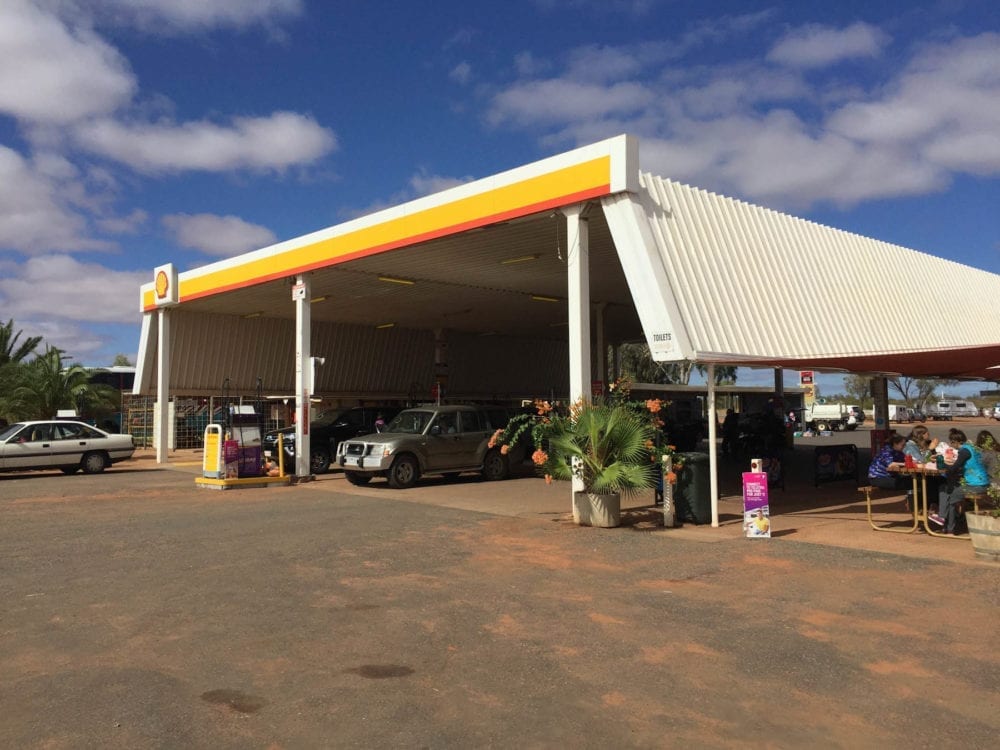
Even with fuel apps that aim to tell you what price fuel is going to be at different service stations, it’s still impossible to know exactly what fuel is going to be like in any given place without being there on the day, but there are some rules of thumb to follow.
- A big town will generally be cheaper than a small town.
- Close proximity to a port or major hub will also typically be cheaper.
- A roadhouse on a major route in remote areas is also likely to be cheaper than a minor road.
- A roadhouse on a highway in major areas will likely be more expensive than service stations off the highway.
There is no hard and fast rule, but if you think about it a little in advance it will save you money. It will save you even more if you plan it out to make sure you don’t get caught with an empty tank! I recommend using the Fuel Map Australia app (iPhone/Android) to help with this. It isn’t always up to date since it is crowdsourced but it does give you a good idea of where service stations are and what the fuel prices are like in the area.
Don’t always buy from the first service station in town
Sometimes the first service station you encounter on the way into town is the cheapest, but often it isn’t, particularly if it is the only one on a major road. For example, if you drive through the NSW town of Wilcannia, there is a United service station on the main road, and it’s the only one you pass on the way through town. There is however also a BP hidden about a minute down a side road. It’s signposted, but it is pretty hidden. You can save yourself 20c/L on diesel (or you could when we were there) by going the few minutes out of the way to fill up at that one verse filling up at the United on the main road.
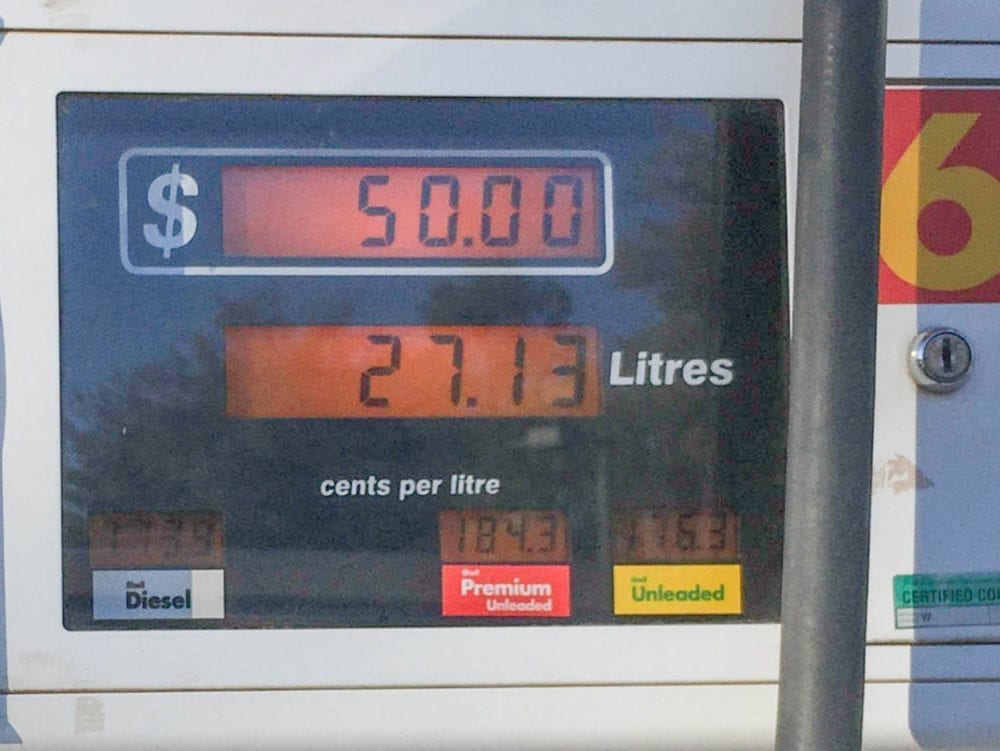
Coober Pedy is another example. There is a Shell on the way into town, but if you go into town further you will find a BP and then a Caltex. In my experience, the Caltex has always been cheaper than the other two, and once you add the StarCard discount it is even cheaper still.
Sometimes you don’t have a choice, you’re on empty (but that won’t happen if you plan your fuel stops), or there is only one service station, or the town is big enough that you can’t find others without taking too much time out (using the Fuel Map Australia app will help with this), but if you can, it will definitely save you some dollars.
Keep an eye out for unmanned filling stations
Unlike New Zealand, Australia has not been a big adopter of unmanned filling stations. However, you are most likely to encounter them in remote areas. Keep an eye out for them as they are typically cheaper than manned filling stations (and tend to be available 24/7 which can be convenient).
For example, the unmanned filling station at Monkey Mia is often cheaper than the manned service station at the nearby town of Denham.
Maintain the correct tyre pressure
Your local mechanic probably reminds you of this every time you get your car serviced, but this saves you money in three ways.
The first is more long term as it reduces wear on the sides of the tyre tread where they are thinner. This means your tyres will last longer, saving you money.
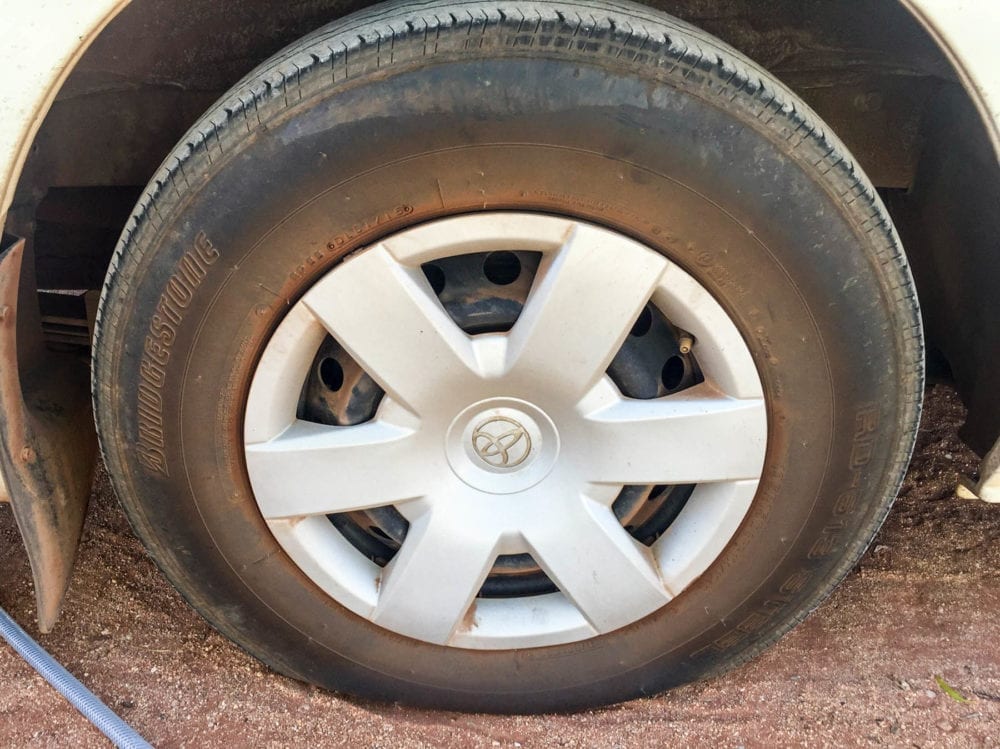
The second cost-saving though is immediate. Keeping your tyres at the appropriate air pressure will help maintain optimum fuel economy, thus saving you money on fuel during your Aussie road trip.
The third cost saving is more theoretical. Keeping your tyre pressure right will help you maintain traction and potentially help to avoid a car accident that could be very costly.
That’s it!
Well, that’s it. I hope you’ve found these tips for saving money on fuel while road tripping around Australia useful. If you’ve got any other tips for saving money on fuel whilst road-tripping around Australia I’d love to hear them in the comments below!
Pin it like it’s hot!
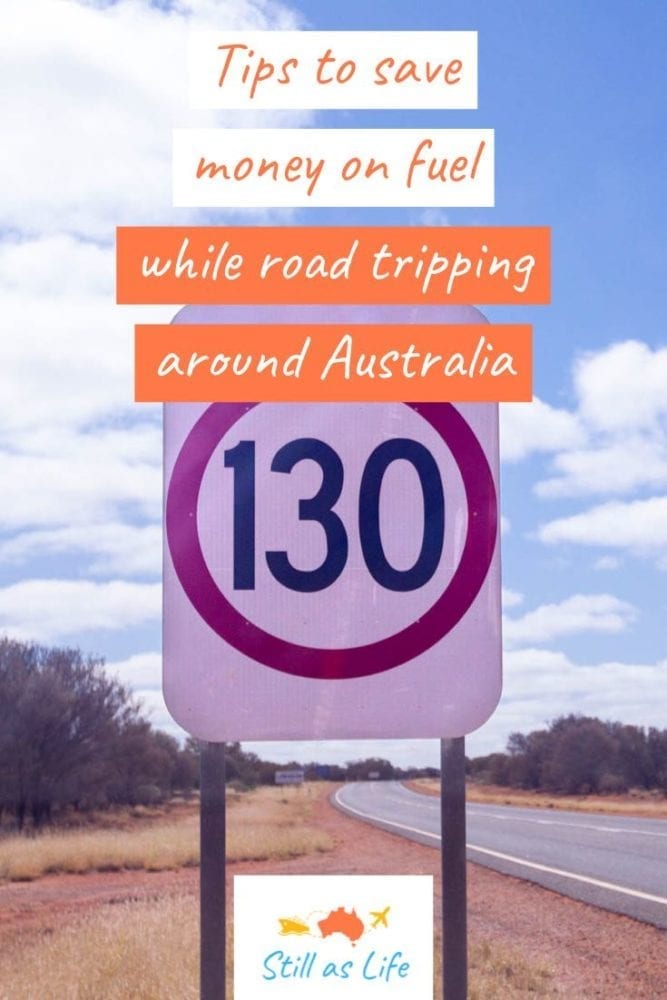
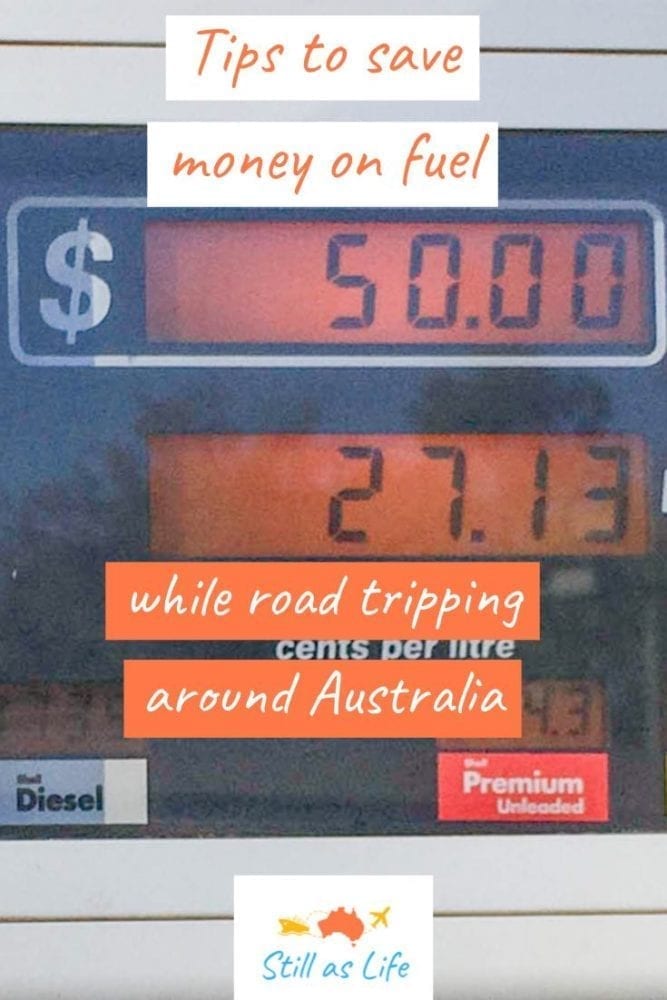
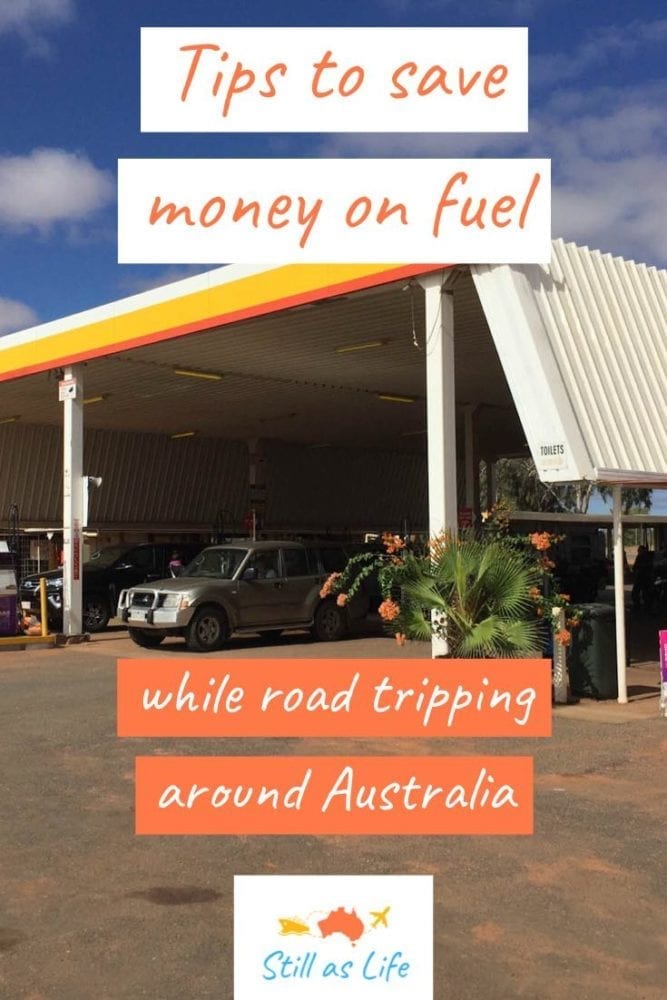
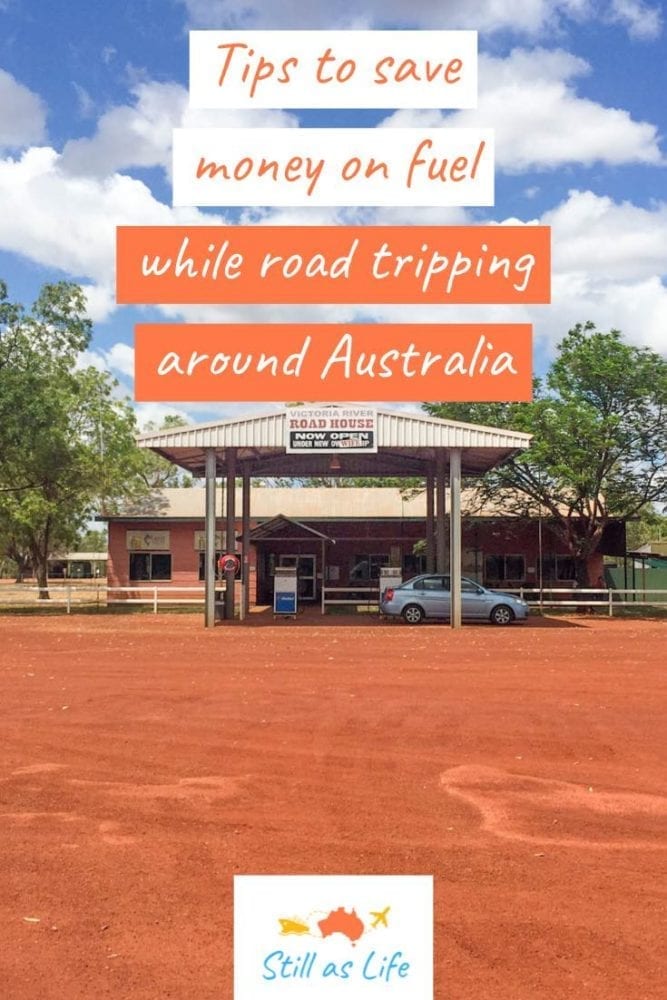
First Published: October 23, 2016
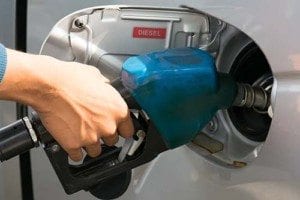
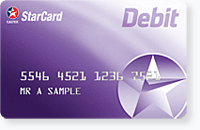


2 thoughts on “10 Tips for Saving Money on Fuel while Road Tripping Around Australia”
What a great post with useful tips! Too many people think that traveling by car is expensive, but it’s not true (only if you aren’t driving with some Bugatti, of course, haha).
I also love doing road trips. That taught me many things and I am thankful for every experience I got!
Thanks for your comment Sandra! This is so true. I love road tripping, and road trips can be the most cost effective way to see some places. That is especially true in Australia where we have so many sights that are nowhere near airports or public transport, or if they are, they are extremely expensive to fly to. There are always things you can do to save money on driving expenses for a road trip as well. I actually have one more that I need to add to this list soon!